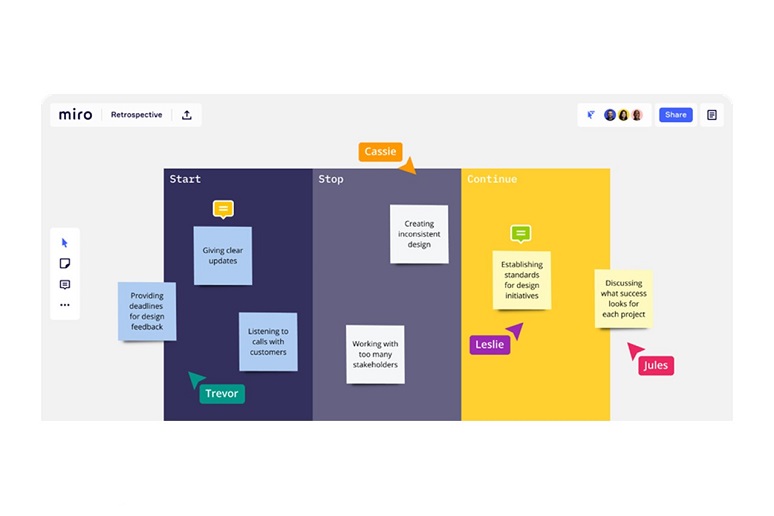Last fall, looking ahead to
top IT trends for 2021, Irwin Lazar, president and principal analyst at Metrigy, pointed to ideation and virtual whiteboard tools for their promise in elevating the virtual work experience.
Digitizing the whiteboard isn’t a new idea, but it does seem to be gaining traction as enterprises look to visual collaboration as a potentially key technology for supporting users in a hybrid work model.
Visual collaboration tool vendors plan to be ready whenever enterprises move forward with this technology. This might be by securing additional funding, as we’ve seen with Mural, which last week
announced 50 million in new capital that it plans to put toward platform development in support of hybrid and distributed workforces and different types of work teams. Or, it might be by forging integrations with UCaaS platforms, as we’ve seen from Miro. Just last week, the company announced that its digital collaboration app is now available to work within
Zoom and
Dialpad virtual meetings.
As enterprises have learned during the work-from-home experience of the last year, virtual meeting tools don’t provide enough intimacy or engagement and participation for strategic planning or team-building activities, Mariano Suarez-Battan, CEO and cofounder of Mural, said in a No Jitter briefing. Likewise, while “getting together around the firepits” provides lots of value, not all teams can be together in person all the time, he added. “If you’re relying on getting together … if you rely on a water cooler to provide good ideas … if you rely on a ping pong table to provide you culture, then you’re going to be stuck,” he said.
Miro and Mural each facilitate engagement via templates for the type of work being undertaken. Within a workspace, users can add visual elements like sticky notes, flowcharts and project maps, and drawings. Additional capabilities like being able to vote or celebrate an idea “help [them] collaborate better together … hopefully in a playful way,” Suarez-Batten said.
Mural and Miro each offer more than 200 templates. For example, Miro customers can choose from templates such as Meetings and Workshops, Research and Design, Strategy and Planning, Mapping and Diagramming, and Agile Workflows, or build their own. They can even publish these templates in what the company calls its “Miro-verse” — aka a marketplace. “It makes it easy for somebody who’s leading a brainstorming exercise to grab one of these templates, get people onto a Miro board, and getting ideas out on the table, said Jeremy Green, head of strategic customer success for Miro in the U.S.
Both Miro and Mural platforms have apps that can be integrated into your workflow, but Miro has a longer list of third-party integrations. Miro considers this a key differentiator, and an offshoot of having an open API platform, Green said. “Whatever our customers are doing, whatever tech they have in their tech stack, we want to be able to have some sort of an ease of integration between those two,” he added. That's to say, Miro's focus is on both integrating its app into other platforms and supporting integration of other vendors' apps within the Miro platform.
Tagging is important within these visual environments, too, both companies said. In Mural’s case, Suarez-Battan said users will soon be able to tag elements and filter elements with different tags. And, as seen in the image above, Miro enables customers to look at a shared project and explore using tags. Looking at a board and seeing other people's cursors moving around and adding comments in real-time can be “really invigorating,” Green said.
Looking ahead, Mural will continue investing in product development and design and engineering, with a blueprint on what Suarez-Batten called the “imagination cloud.” This cloud, he said, will comprise “different products and services that complement each other, to help people innovate.”
Meanwhile, Miro’s web-based application has grown since March 2020 from about four million to over 20 million users today — and they all have different stories, Green said. “Not all kind of return to work is going to be the same, and not all processes are the same … we just need to figure out ways to empower people that are now sometimes in-office.”










